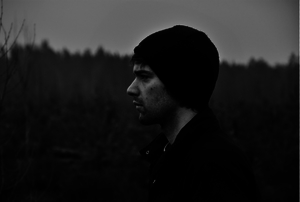Every person, at every point in time, has lived in a divided world. We might feel sometimes like our generation’s been the most polarized or too-far-gone, the most set-against-itself, and we certainly have reason for that. Think about globalization, populism, the refugee crisis, ideological fisticuffs between supporters of diversity or free speech, the current administration in the White House or our culture’s inability to come to grips with religious traditions that continue to hold inexplicable resonance. But, as close attention to history reminds us, every generation goes through a deep crisis. The trick, then, might be less in hand-wringing or longing for a simpler age than in trying to diagnose the all-too-easy-to-miss fault lines of our present dividedness.
Luckily, we’ve been comforted in the task by the work of David Foster Wallace, one of North America’s truly luminous literary figures. And today, on the 10th anniversary of his death, it’s fitting to revisit the way his thoughts continue to vibrate today.
Born in 1962, David Foster Wallace careered to literary superstardom with the 1996 publication of the novel now seen as his magnum opus, Infinite Jest. A dense, sometimes maddeningly tangential novel coming in at over a thousand pages, it was immediately lauded as one of the great books of the past few decades. It’s certainly not an easy read, but anyone who makes it through has a difficult time expressing the precise, baffling way it runs a trench right through the reader. My impression, while reading it, was like holding a living Rubik’s Cube. Finishing it was like realizing it was holding me the whole time.
The book boasts a plot involving tennis progenies, halfway-house occupants, Quebecois separatist-terrorists and a home movie so entertaining people lose the will to live after watching. Its frenetic, encyclopedic plot is enough to exact more than a few eye rolls from the casual reader, which makes the comparatively tame setting of his next novel (The Pale King, unfinished by the time of his death and published in 2011) a bit of a shock: a dead-end IRS office in Illinois where boredom’s the only thing separating a group of tax workers from the demons frothing just barely under the surface. In both, as well as in numerous essays ranging from the horrors and triumphs of cruise liners and county fairs, the miracle is in how Foster Wallace finds, in even the most jagged side characters, a nugget of dignity that sears like stoked coal.
But the most direct and, thankfully, accessible piece of wisdom he’s published is a little booklet called This is Water. Originating as a commencement address given at Kenyon College in 2005 (beating out fellow candidates Hillary Clinton and astronaut-senator John Glenn), it’s been posted in full, condensed for light reading and stretched to fit a thin, posthumous volume available on Amazon.
It starts with a parable. Two fish swim past an older fish who ask, "How’s the water?" They float on until one stops to ask what exactly this water thing is anyway. Foster Wallace is quick to clarify that he’s not claiming the role of some wiser fish so much as pointing out how “the most obvious, important realities are the ones that are hardest to see and talk about.” In other words, we’re sometimes so absorbed in the fabric of our own lives that we can be blind to core things in the world that end up shaping our experiences, worldviews and selves.
This isn’t something to beat ourselves up for any more than for being weak, fallible creatures, and Foster Wallace offers advice on processing this part of our nature. More than anything else, he suggests a radical form of attention to things. Think the kind of attention that drove him to create swarming, pedantic, literary mosaics of people whose commonplace lives, under his microscope, teem with life and pain and hope and everything we’re nervous about find language to express. He challenges us to see the ‘water’ in our everyday lives and prompts us to resist the seemingly hard-wired tendency to turn off, to be distracted, to refuse to see. Learning to think, for Foster Wallace, amounts to learning to choose what we focus our attention on. Ultimately, it means learning to be aware of what it is we’re choosing to worship.






